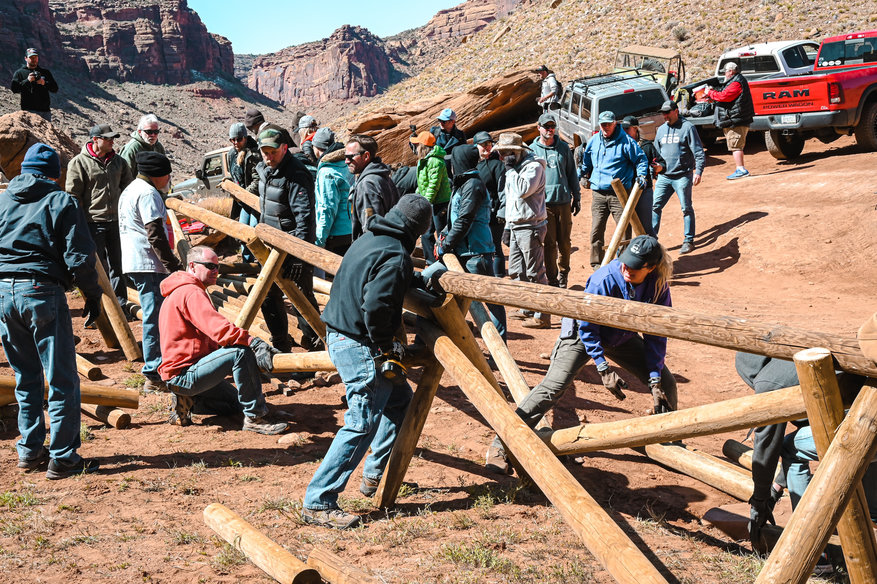by Matt Konkle
Creative Content Managing Editor
MOAB, Utah — Lori Hunsaker gazed at the whirl of motion and sound all around her from behind a pair of midnight black sunglasses. Logs were being carried from trucks to several assembly areas. Electric screw guns talked noisily. Reciprocating saws whined.
Work had just kicked off on an important Kane Creek trail management project on a recent sun soaked Wednesday just outside of Moab during Easter Jeep Safari week.
And yet, from Hunsaker, those glasses hid her eyes well enough that a weathered smile was the only real sign of emotion.
At first.
The archeologist with a 30-year history in the field carried a clipboard under one arm, and sported the familiar brown-on-light brown jacket and pants uniform indicative of those who help protect our public land. For Hunsaker, a U.S. Department of the Interior patch on her left sleeve told her story.
But all that stuff — the sunglasses, clipboard, jacket, patch — all it did was to conceal what she was really feeling because of all that activity around her.
A heart filled with pride.
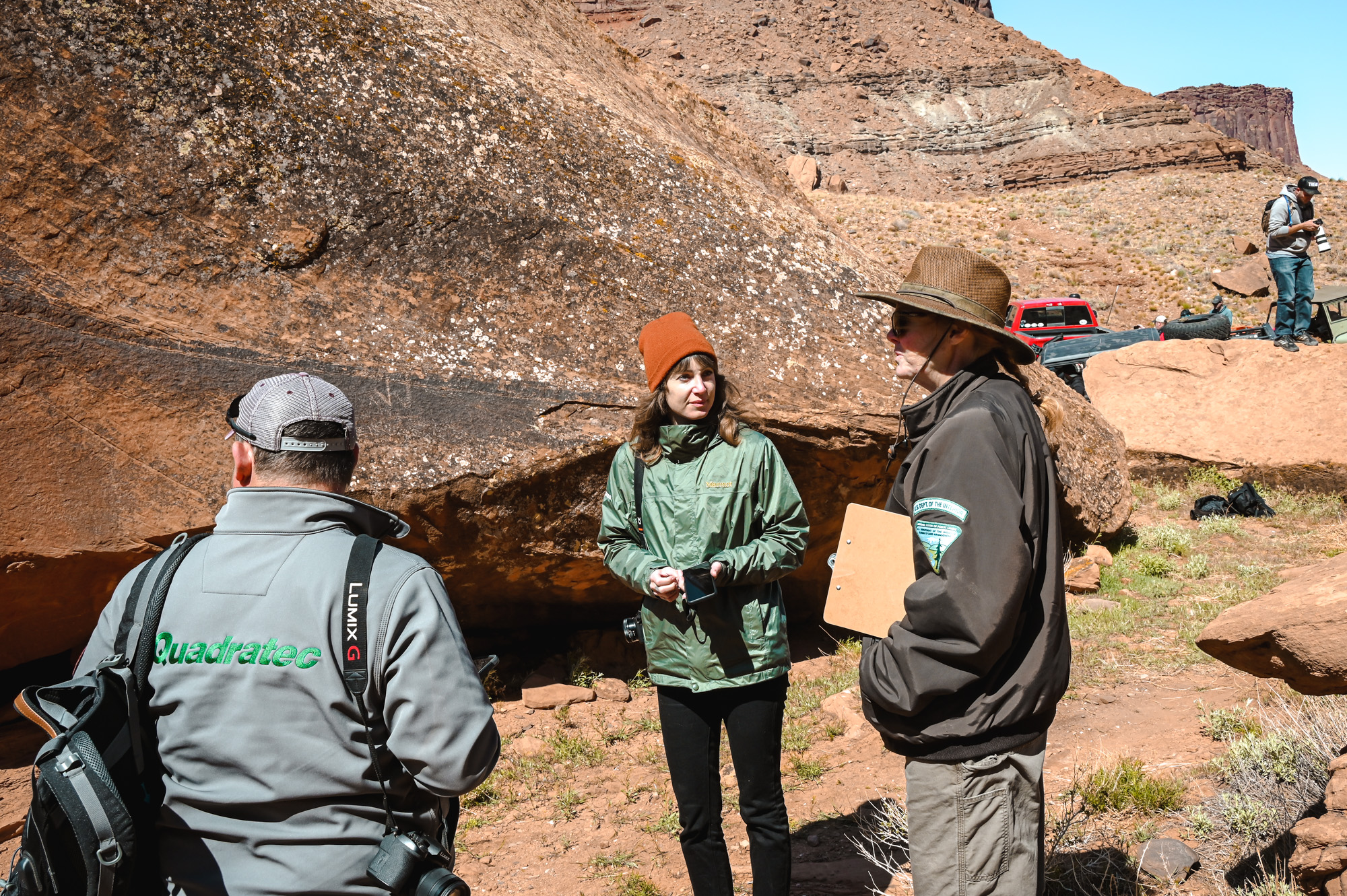
”Oh, it’s all I can do to hold back the tears,” Hunsaker said, both arms tucked into her jacket. “I think it is really nice to see the public care about their public land, and about these resources. And that so many people are willing to spend time and come out and put in the time and effort to protect this area.”

The recent Kane Creek work project focused on a petroglyph rock garden site just off one of the trail’s numerous twists and bends. It is a ‘blink and you’ll miss it’ location that more and more people were no longer missing.
The unfortunate part — many were unknowingly trampling the ground around the site to see those petroglyphs etched into the rock, in the process damaging soil that once could have housed structures, fire pit remains or other indications of early man.
Even worse, some onlookers decided to add their own ‘petroglyphs’ by scratching their initials, or creating other graffiti on the rock.
So the Kane Creek project sought to build buck-and-rail fencing along the outside of the rock formations, and then construct a marked path from the trail to the petroglyphs so the imagery could still be seen without damaging the surrounding area.
”This is a place where ancient man lived and thrived out in the desert, and it is getting loved to death so to speak so we needed to build a barrier to keep people out of the site and protect the archeological integrity of it,” said Tread Lightly National Stewardship Manager Evan Robins. “With this type of project, it is vitally important to have the industry and volunteers like this participate in projects. I can’t do this alone — this fence would have taken me all week to get done. But we all came together and busted it out in a couple of hours.”
Tread Lightly! is a national nonprofit organization with a mission to promote responsible recreation through stewardship programs and ethics education to ensure off-roading opportunities are accessible for future generations. For over 30 years, Tread Lightly!, along with its members, partners and volunteers, has worked together to improve access through on-the-ground trail improvement projects, public land cleanups and strategic educational messaging tailored to promote responsible riding.
Robins, along with Tread Lightly! Master Tread Trainer Scott Ammerman, Tread Lightly!’s Anna Baklund, U.S. Bureau of Land Management Supervisory Ranger Reed Kennard and Matt Westrich, President of the Utah Four Wheel Drive Association, spent the early part of Easter Jeep Safari week ferrying project materials from town to the remote Kane Creek work site so everything would be ready for project day. This included scores of long wooden logs, signage, power tools, trash bags, gloves and plenty of hardware to connect the logs.
Then, the Kane Creek project day saw the largest turnout yet for these Tread Lightly! trail maintenance events, as dozens of volunteers turned out to help.

Once at the site, volunteers began moving logs from a staging area to the site, where the wood was cut to size and framed into pieces to build the buck-and-rail fencing. Others began moving small- to medium-sized rocks and lining them up to create a path, outside the fencing, to the petroglyph site.
These volunteers included some who were just out in Moab for EJS week and wanted to help, as well as many people in the Jeep industry — all doing their part to protect an important historical site.
”This is something really important,” Kennard said. “We are stretched really thin at the agency, and have over 1.8 million acres and 3,000 miles of trails, and I only have six park rangers.
”So for us to do a project like this, it would have taken all week to get everything out here and get it done. And watching people help out here is amazing — getting that customer buy-in so to speak. Having folks who come out here to this area, take time out of their vacation, and give back because they enjoy it is just amazing to see.”
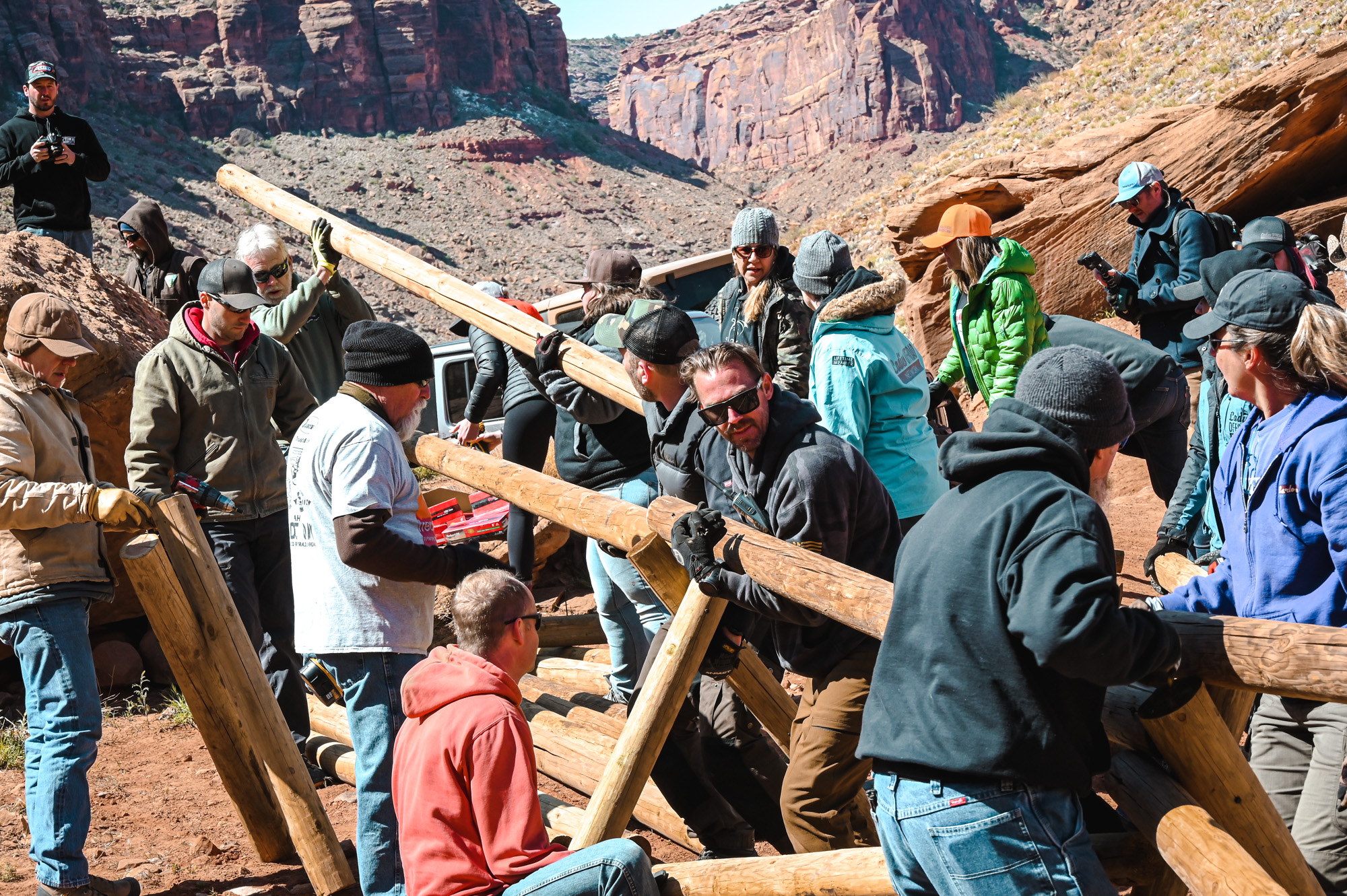
One of the industry partners helping out on this maintenance project was PowerTank, a long-time Tread Lightly! supporter. Owner Steve Sasaki rolled up his sleeves and joined other volunteers hauling wood to the work site and installing signage marking the new path. He was also amazed at the day’s volunteer turnout.
”Yeah, it surprised me that this many people came out here today, I didn’t know there would be this much interest,” he said. “It was really nice to see. One of the things for us at PowerTank, we talk a lot at the office about what Tread Lightly does, but now we get to see it here in person. We get to help at an actual event, and now we really know just where our money is going and how much it means to everyone to help support these projects.”
Important petroglyph sites are located all across the Moab area, making the region just as well-known for its history as it is for outdoor activities like off-roading, biking and hiking.
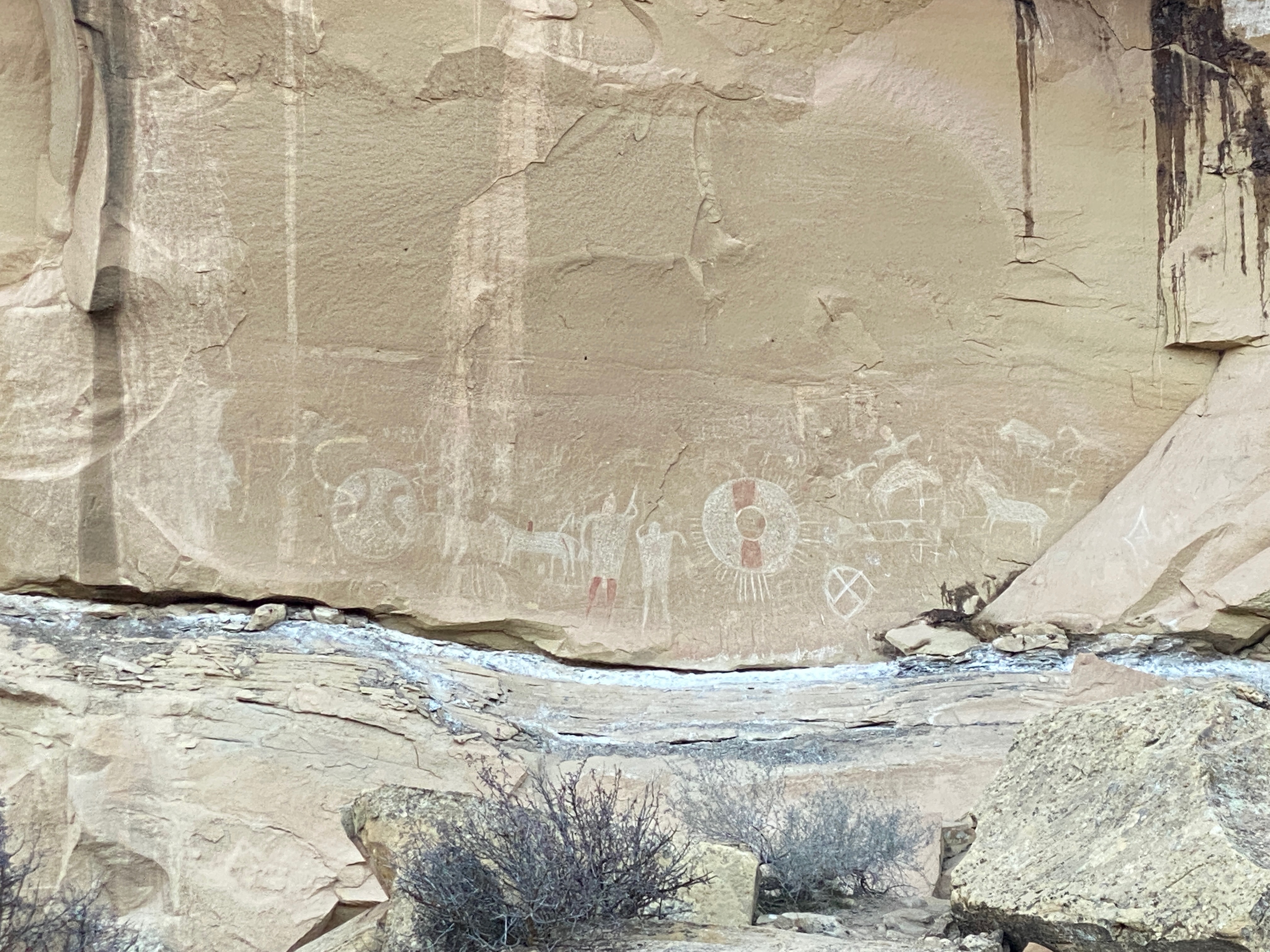
Many panels in the region came from the Anasazi and Fremont cultures — Native Americans who lived in what is now southeastern Utah between 1 AD - 1275 AD.
The Anasazi centered south of Moab in the Four Corners area, and concentrated much of their subsistence efforts on the cultivation of corn, beans and squash. These were sedentary people, who also harvested a wide variety of wild resources such as pinion nuts, grasses, bighorn sheep and deer.
The Fremont people also grew corn, and were apparently more dependent on hunting and gathering wild resources than were the Anasazi. Their territory was mainly north of the Colorado River, but overlapped with the Anasazi at Moab.
Both cultures had a complex social structure, and were highly adaptive to the extremes of the environment. The Anasazi and Fremont are classified by scientists as “Formative” cultures.
The Kane Creek location offered many similar petroglyph images found elsewhere in the region, including ladders and triangle-shaped figures. Hunsaker said most drawings could be around 2,000 years old and continuing to preserve them is just as important for us, as it is for those whose ancestors created the location.
”Archeologists generally don’t try to interpret what they mean,” she said. “But I’ve gone out with a lot of indigenous people and certainly these sites mean a lot to them. It is their stories, their books and their imagery. For us, this could have been the remains of a structure or the remains of a hearth.
”We wouldn’t really know until we dug it up, and we usually don’t want do that kind of stuff. Our job is to preserve and protect as much as possible.”
Which is why installing the fence, and creating a special path, was so important for this year's Tread Lightly! trail maintenance project. It may not keep everyone from getting up close and personal with the petroglyphs, but hopefully it creates awareness in enough people to keep some distance.
This also includes those who want to help and erase all the graffiti.
”I know that it is tempting to try and help clean it off, but unfortunately, if you haven’t been appropriately trained on how to treat it, sometimes it can make it worse,” Hunsaker said. “So, we’ve been through a lot of training on how to do it. Without proper training, trying to get that graffiti off without smearing it is pretty tricky.”
Over the years, Quadratec has partnered with Tread Lightly! and the BLM for numerous maintenance and restoration projects on trails through Moab, installing fencing and signage, as well as clearing brush and vegetation so trails could remain active during Easter Jeep Safari Week — and long after.
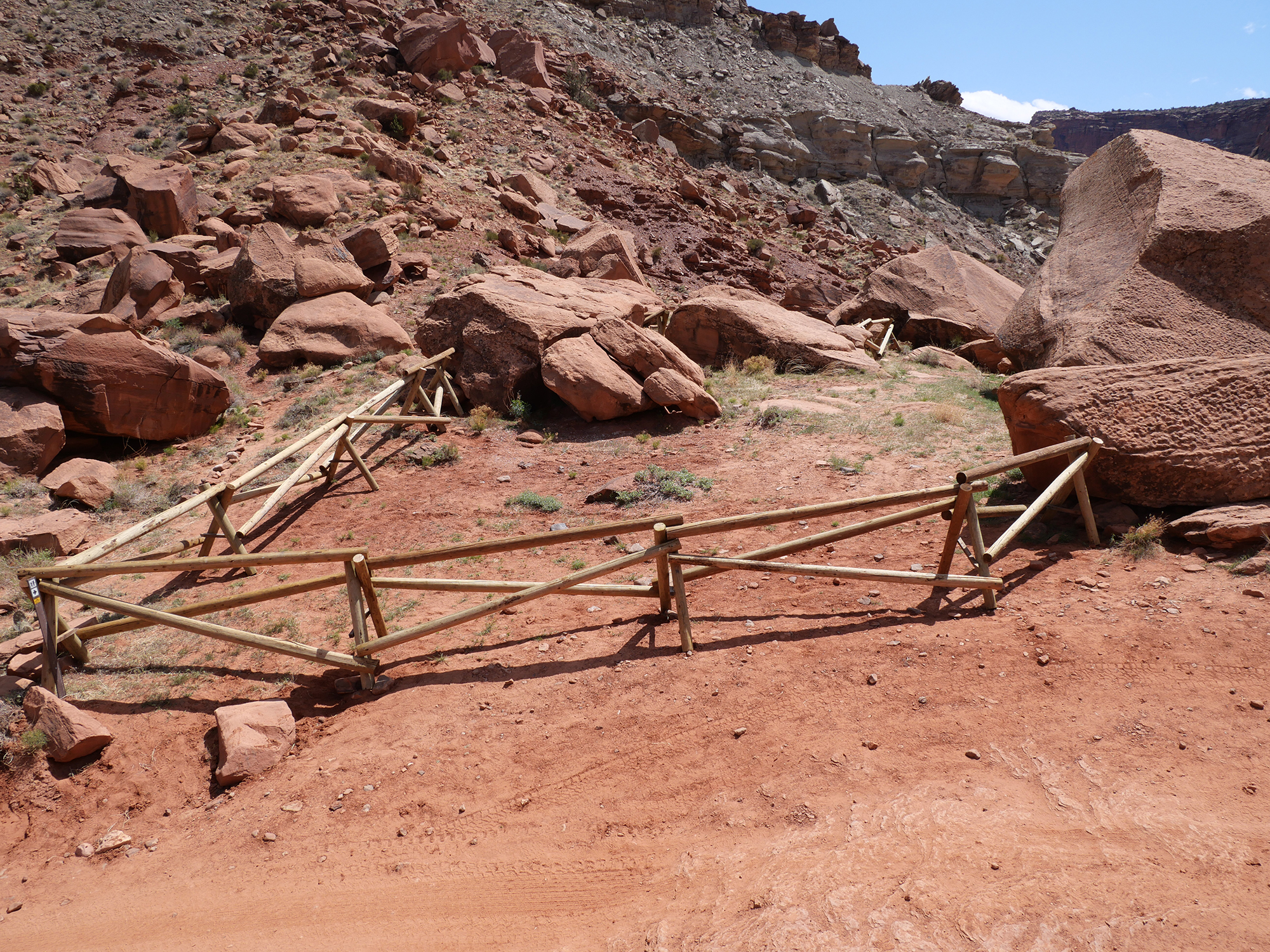
For Hunsaker, now surveying the protective fencing around the important historical site, this project meant a little bit more that the average cleanup.
”Being able to preserve that data potential, that soil, it’s going to tell us a lot about what people ate, and we may be able to get an organic carbon date from it,” she said. “And we want people to continue enjoying this site, so getting them to walk around the sensitive area — it’s kind of a win-win for everyone.
”I have the best job in the world.”
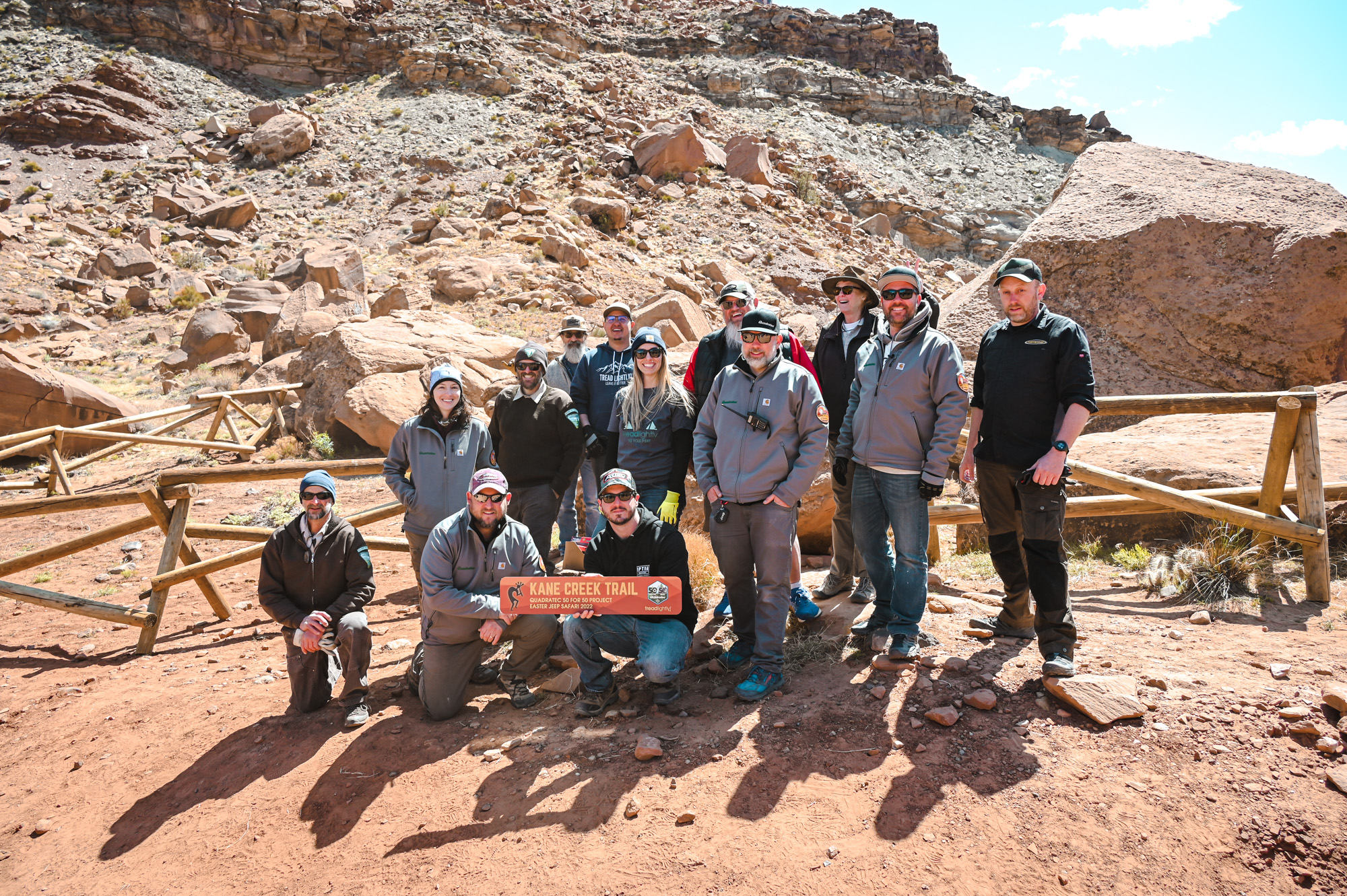
Related Articles:
Jeep Unveils Full 2022 Easter Jeep Concept Lineup












